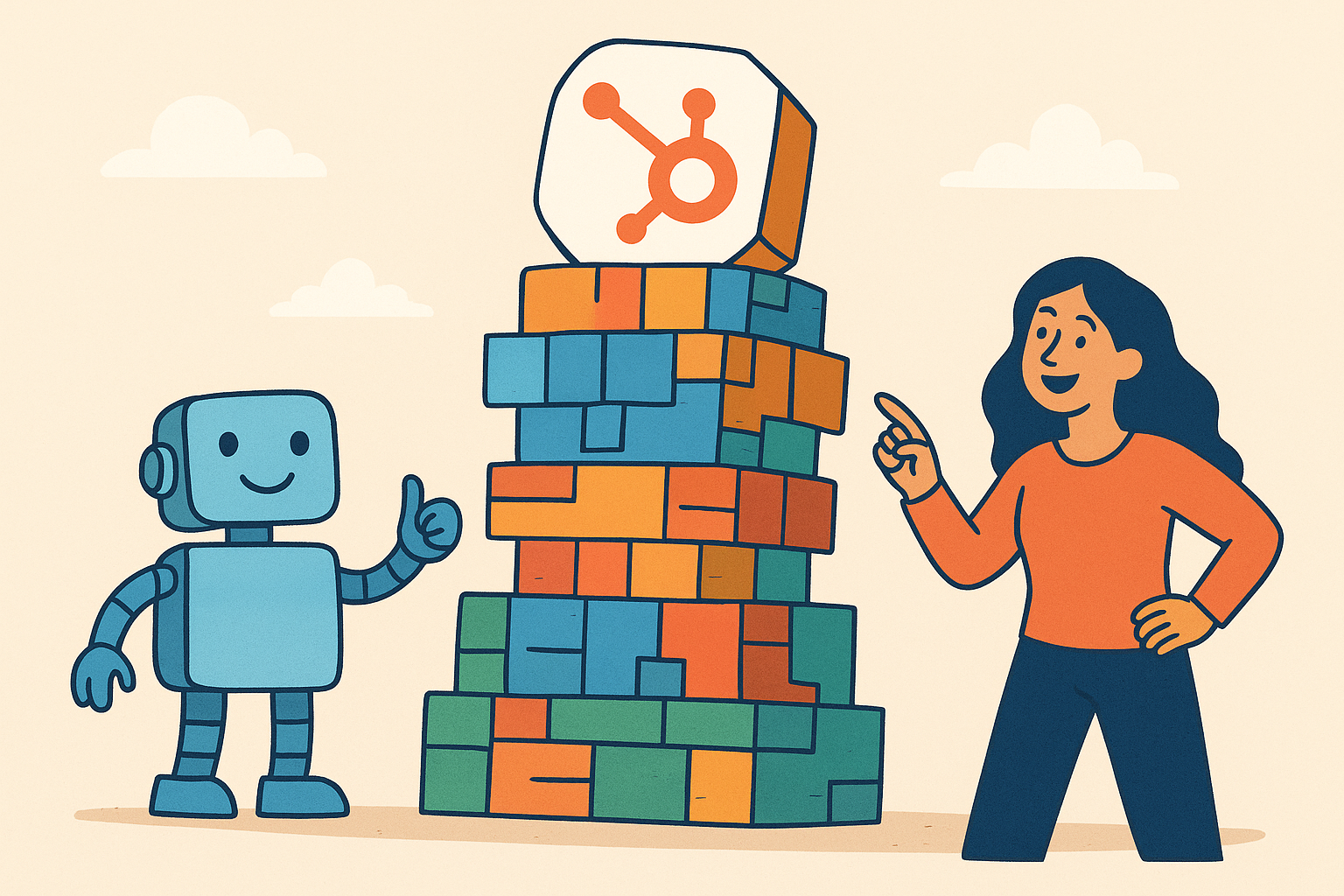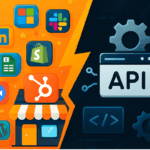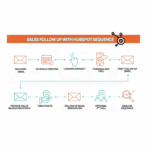
Beyond the 'Frankenstack': Why a Unified Customer Platform is Your Next Competitive Edge
The Age of the Disconnected Customer
How many tabs do you have open right now to truly understand a single customer? One for your CRM, one for your email marketing tool, another for your support desk, and perhaps a fourth for your project management software. You’re trying to deliver a unified customer experience, but your technology is fighting against you.
This is the common business problem we call the “Frankenstack”—a tech stack stitched together one “best-of-breed” point solution at a time. While each app is powerful individually, together they create data silos, unnecessary complexity, and a disjointed customer experience.
The solution isn’t another tool. It’s a fundamental shift in strategy: moving from a collection of apps to a single, interconnected Unified Customer Platform (UCP).
From HubSpot’s perspective, this shift is not just a trend; it’s the natural evolution of the CRM and the fulfillment of the inbound philosophy—placing the customer at the center of everything. This post will show you how moving to a UCP is the key to shedding complexity and gaining your next competitive edge.

The Cracks in the Old Model: Why the Multi-Tool Approach is Failing
The multi-tool approach of stitching together dozens of separate SaaS solutions is actively creating friction, both for your employees and your customers.
The High Cost of Data Silos: When data is fragmented across multiple systems, no single team has the full picture. Marketing can’t see sales activity to score leads properly, Sales lacks vital context from recent support tickets, and Customer Service has no visibility into the sales process. This results in poor decisions and inter-departmental friction.
The Broken Customer Experience: Customers are forced to repeat themselves to different departments because data isn’t shared. They receive inconsistent messaging and branding across the journey, leading to a reactive, rather than proactive, relationship.
The Burden on Your Teams: Employees waste countless hours on manual data entry, toggling between systems, and managing multiple logins. For reporting, analysts struggle to stitch together data from different sources to produce a single version of the truth, leading to high administrative overhead and low job satisfaction.
Defining the Future: What is a Unified Customer Platform?
A Unified Customer Platform (UCP) is far more than just an integrated tech stack; it’s a single, cohesive system built on a shared, centralized foundation.
A true UCP must possess the following core components:
A Single Source of Truth: This is the non-negotiable foundation. A powerful, flexible CRM database that houses all customer data—from first website click to final renewal—in one place.
Natively Built Applications: The front-office tools (Marketing, Sales, Service, Content Management, Operations) are built by the same company on the same infrastructure. This ensures data flows instantly and flawlessly between applications.
A Consistent User Experience: Employees benefit from one login and one interface. This drastically reduces training time, eliminates context-switching, and increases user adoption.
An Open and Connected Ecosystem: While unified, a UCP must be open. It needs a robust App Marketplace and powerful APIs to connect specialized, mission-critical tools (like ERP or niche finance software) when absolutely necessary, with the CRM always serving as the central hub.
The HubSpot Perspective: Building for Connection, Not Complexity
HubSpot wasn’t just built to participate in the UCP shift—it was designed from the ground up to define it, powered by its CRM and the central Flywheel model.
The CRM as the Central Nervous System: HubSpot’s Smart CRM is the foundation that connects all data and powers the entire platform. Every interaction, from reading a blog post to receiving a customer service reply, instantly enriches the same customer record.
The Power of the Hubs: HubSpot’s integrated Hubs create a unified customer experience seamlessly: A visitor reads a blog post (CMS Hub), converts on a form (Marketing Hub), is assigned to a sales rep who works the deal (Sales Hub), becomes a customer (Service Hub), with all data synced automatically (Operations Hub).
The Flywheel in Action: The UCP concept connects directly to the Flywheel model. A unified platform removes friction at every handoff between departments (Attract, Engage, Delight), allowing the flywheel to spin faster and generate more growth through a superior customer experience.
The Tangible Business Impact of Unification
Moving from a collection of apps to a UCP isn’t just a tech decision; it’s a strategic growth strategy that delivers clear returns.
Unprecedented Alignment: Marketing, Sales, and Service teams work from the same playbook and the same real-time data. This eliminates the “he said, she said” between departments and drives shared accountability for revenue.
Deep Personalization at Scale: You can use data from across the entire customer lifecycle—including recent support tickets and sales conversations—to create truly relevant and timely experiences. This hyper-contextual approach significantly boosts conversion rates and loyalty.
Radical Efficiency and Lower TCO: You drastically reduce subscription costs from redundant tools and save countless hours of manual data entry and administrative management. The consistent user experience also leads to faster time-to-value for new employees.
Actionable Insights You Can Trust: End-to-end attribution reporting becomes a reality. You gain a clear, 360-degree view of business health from a single dashboard, empowering your executive team to make confident, data-backed decisions.
Stop Building a Stack, Start Building a Platform
The era of the disconnected “Frankenstack” is over. Winning in the age of the customer requires a unified approach that prioritizes a seamless, contextual experience.
The shift to a Unified Customer Platform is not about simply replacing tools; it’s about adopting a new, customer-centric way of doing business. HubSpot’s vision—a single platform that is easy to use, powerful enough to scale, and keeps the customer at its core—is leading the charge.
Schedule a free platform strategy session with our experts today.
Resources:
HubSpot CRM Platform: https://www.hubspot.com/products
HubSpot Flywheel Model: https://www.hubspot.com/flywheel
HubSpot Operations Hub: https://www.hubspot.com/products/operations


